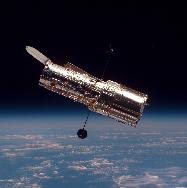Space Shuttle Discovery lands safely
News story originally written on February 21, 1997
Space Shuttle Discovery landed safely at 2:32 am Central Time at the Kennedy
Space Center on Friday, February 21. This is the ninth nighttime land in
Shuttle program history. The completed mission was a complete success. The
Hubble Space Telescope has been repaired and is expected to be running again
within the next few weeks, after it has been calibrated. The mission had five
spacewalks and accumulated 4.1 million miles in distance.
The first landing opportunity at 1:41am was denied due to low clouds over the
Kennedy Space Center. Once the weather cleared, Discovery made its descent.
The next repair misssion to the Hubble Space Telescope is expected in 1999.
You might also be interested in:
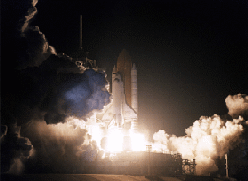
Astronauts Mark Lee and Steve Smith of the space shuttle Discovery completed their fifth and last spacewalk in the repair of the Hubble Space Telescope. The spacewalk lasted 5 hours, 17 minutes. Now that
...more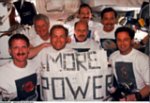
The Discovery Space Shuttle is scheduled to land at 1:48 am EST on Friday, February 21, at Kennedy Space Center (KSC) in Cape Canaveral, Florida. This will be only the fourth time that a nighttime landing
...more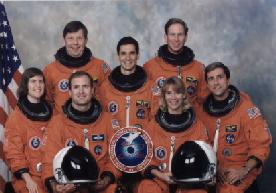
At 2:01 PM on April 3, NASA plans to launch Space Shuttle Columbia into orbit from the Kennedy Space Center. The shuttle will stay in orbit for two weeks in which several experiments will be carried out.
...more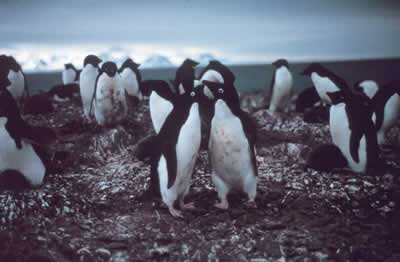
Scientists have recently discovered that thousands of Adelie Penguins thrive in patches of the chilly Southern Ocean near Antarctica's coastline. In these special areas of the ocean, called polynyas,
...more
A new study has found that a mixing of two different types of magma is the key to the historic eruptions of Mount Hood, Oregon's tallest mountain, and that eruptions often happen in a relatively short
...more
Researchers have found a primitive Earth mantle reservoir on Baffin Island in the Canadian Arctic. Geologist Matthew Jackson and his colleagues from a multi-institution collaboration report the finding--the
...more
Some geologic faults that appear strong and stable, slip and slide like weak faults. Now an international team of researchers has laboratory evidence showing why some faults that 'should not' slip are
...more
